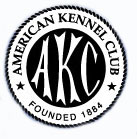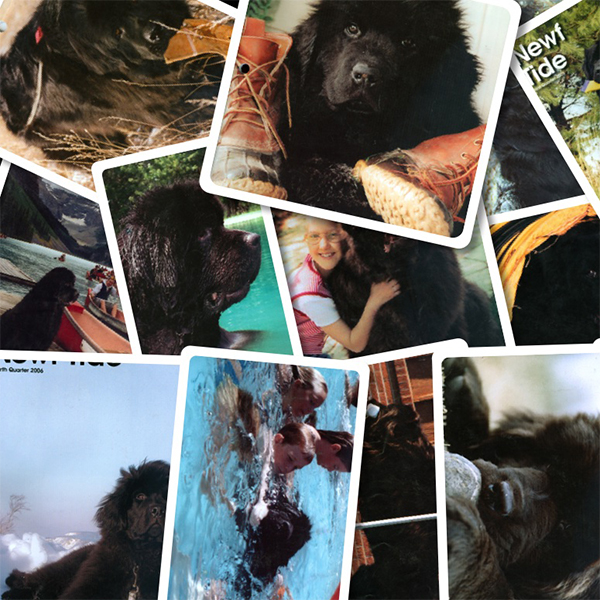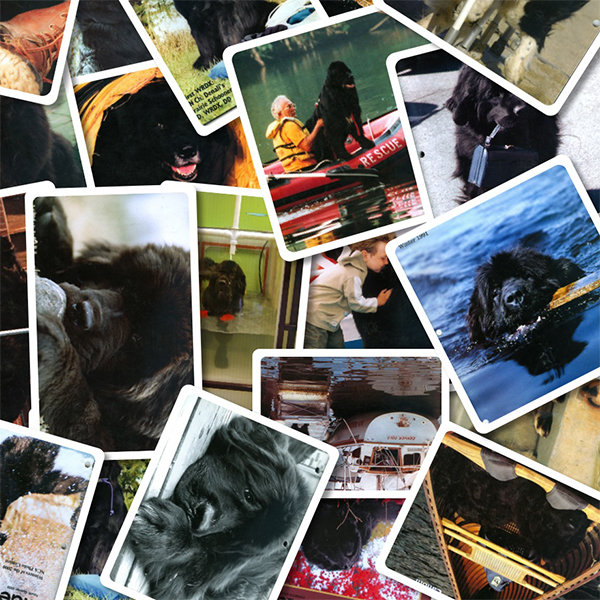
Our guest columnists are Jack and May Bernhard. They have been Newf breeders for about 30 years, using the Newfport prefix. Jack has judged for more than ten years and May has judged for seven years. They have judged Newfoundland specialties in France, Italy, Germany and Denmark, as well as judging Newfs in the United States.
For some thirty years now we have watched Newfoundlands gait around the show ring, and while our breed has greatly improved structurally, the speed at which entries are gaited has increased to the point where they often look like they should be on a racetrack. Fast is not always better, and more often than not will detract from the dog’s appearance.
The Newf’s history of water rescue and draft work demands strength, but certainly not speed. Newfoundlands are the Clydesdale horses of the dog world and, like the draft horse, should excel in endurance. They should be massive-boned and big-chested. Speed favors a lighter built, more rangy type animal - not desirable characteristics in a Clydesdale or a Newfoundland.
Breed appropriate gait should be an exhibitor’s aim. Achieving it is not an easy task because the optimum speed is not the same for all dogs within a breed. Much depends on structure, musculature, conditioning and that mysterious factor of attitude - how well a dog uses nature’s endowments. The exhibitor must avoid the trap of kennel blindness and appraise the quality of his dog’s movement. If the exhibitor doesn’t have an eye for it, it would be wise to enlist the assistance of someone else.
Structure is usually the essential factor. A dog that is well angulated at both ends will naturally move well at a faster gait than a dog that is unbalanced. Often what is seen is good angulation in the rear matched with steep shoulders up front. Such a dog would tend to “over-reach” – swing its hind legs to one side in order to avoid interference with the front legs by passing them in stride; or, it may “pad” with its front feet, flipping them upward in order to keep them in the air longer.
This of course is faulty movement, and moving such a dog too fast will only exacerbate its negative impression on a judge. On the other hand, if the dog is a good mover, moving it too fast will diminish its favorable impression.
The appropriate gait then is not how fast a dog CAN move but how fast it SHOULD move. Often, even a good moving dog will display faulty movement (usually over-reaching) when it moves too fast. A considerate judge may ask the handler to move it again (“and slow down, please”), giving the dog a second chance to correct the fault. But not all dogs get a second chance.
Dog showing is, of course, “show business” and a showy dog that has “attitude” makes for a pretty picture. But animation and speed are two different things and the phrase “BREED APPROPRIATE’ must be kept in mind. No judge would expect a Newf to race around the ring like an Afghan or a German Shepherd Dog, and a Newf that does so might be suspected of perhaps not having the desirable bone and substance.
Reach and drive, so necessary in a working dog, does not mean having four legs going a mile a minute. A dog lacking drive may appear to move faster, when in actuality it is merely working harder. A dog with an easy, comfortable gait will cover as much ground in the same time with fewer steps, and have energy left over.
A well groomed Newfoundland moving easily around the ring at a comfortable speed, his tail wagging, is indeed a thing of beauty and deserving of the admiration of both judge and spectators. So, the next time you show your Newf, remember that this is not a race, and show your dog at its best. MB, JB

